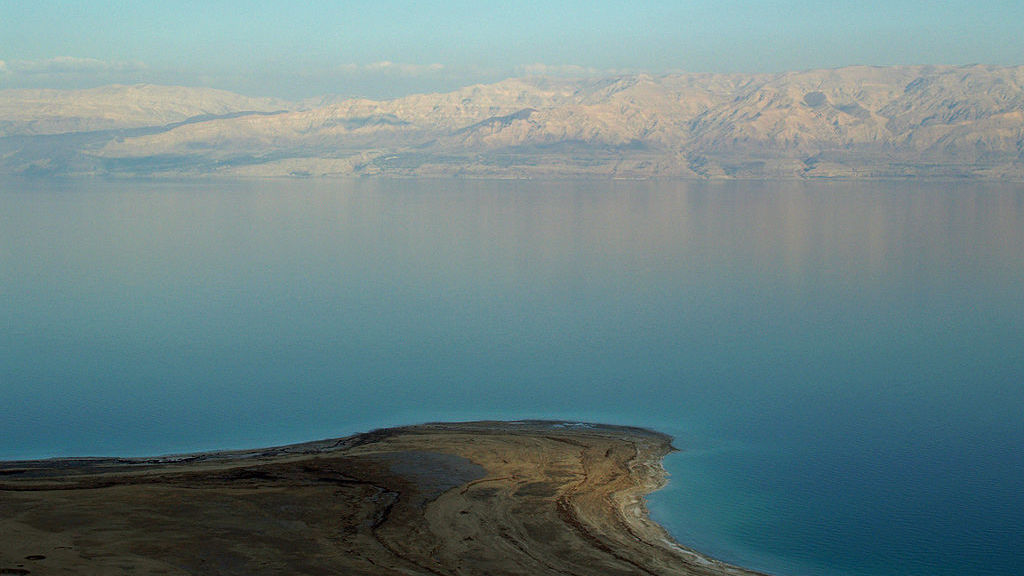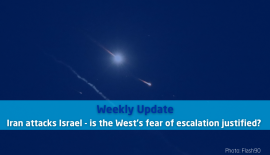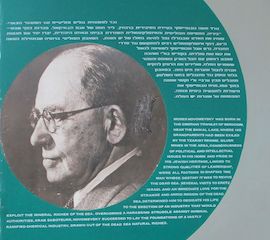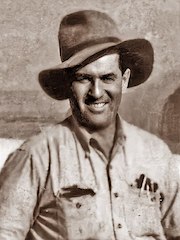The Life of the Dead Sea
There are many English road signs in Israel that lead to the Dead Sea, but what is wrong with them is that the Dead Sea is neither “dead” nor is it a “sea.” It is a lake, and what’s more, being rich in minerals, the “dead” sea also contains eleven types of living organisms. That aside, it is one of the most famous landmarks in the Land of Israel. Known in Hebrew and in the State of Israel as the Salt Sea (which in Hebrew, is interchangeable with “lake”), it is the world’s saltiest body of water and at over four hundred meters below sea level, it is also the lowest point on earth.
“The Dead Sea is neither “dead” nor is it a “sea.” It is a lake, and what’s more, rich in minerals”
Although cheap and plentiful these days, salt is still a vital commodity. It keeps the body’s electrolytes in balance. Without enough salt we would feel nausea, weakened muscles, mental confusion and even risk coma and death. Salt is a lifesaver.
People in times gone by also understood the importance of salt. During the brutal Roman occupation of Judea, two-thousand years ago, Roman soldiers mined the salt from the lake. Convoys of camels transported it up through the steep ravines of the Judean Desert, and on to the coastal ports where they shipped out the tons of this precious commodity to the rest of the Roman Empire. The soldiers were paid their salary in salt cubes, hence the etymological relationship and presence of the letters “S” and “L” in all three words: SoLdier, SaLt and SaLary.
The first person to discover that the Salt Sea was actually below sea level was the German scientist and explorer, Gotthilf Heinrich von Schubert. In 1835 he traveled to the Holy Land armed with the latest in scientific equipment. It was while journeying down from Jerusalem to the Salt Sea that he noticed the pressure reading on his state-of-the-art (albeit cumbersome) barometer. It was off the charts. Nothing made sense. Puzzled, when he started to climb back up the hill to Jerusalem he noticed that the barometer now gave a normal reading. This led von Schubert to the correct conclusion that the Salt Sea is below sea level, and possibly the lowest place on earth.
“Theodore Herzl wrote of future days when the “Dead Sea” would be brought to life by Jewish people returning to the Land”
The Dead Sea is a name that Hebrew speakers never use*. Nothing about the Land of Israel can possibly be dead because it is a land brimming with life. The first Jew in modern times to understand this principle and also the life-giving qualities of the Salt Sea was the father of modern Zionism, Theodore Herzl. In his book “Altneuland,” Herzl wrote of future days when the “Dead Sea” would be brought to life by Jewish people returning to the Land.
Influenced by Herzl’s ideas was Russian-born scientist Moshe Novomeysky. Far away in Siberia he was researching the minerals of the mines in Siberia. After reading “Altneuland” he set off to the Land of Israel to obtain a tender from the British to mine the potash from the lake.
Potash was considered a miracle fertiliser, and Novomeysky envisioned that the mining and sales of it could bring life to the struggling Jewish settlement in the then British-ruled Land of Israel. An income would encourage thousands of persecuted Jews to come back to their homeland. It was none other than the so-called Dead Sea which would give European Jews life and hope for a future.
Once in the land, Novomeysky asked his friend in Siberia Moshe Langotsky to come over. Novomeysky needed to persuade the British to give him a tender to set up his potash plant. Permission could only be given in London – and that meant going there. Novomeysky needed his friend to watch over the north beach which is where he wanted to build the plant. But Langotsky was worried. He decided he would come just for a couple of weeks because it was unsafe to stay in the area alone. Local bandits were always a threat. But two weeks was not enough. They had to come up with a brilliant ruse. No matter how hostile the locals Arabs were towards strangers, they gambled that no one would attack a “doctor.” So Langotsky decided to be one. He opened up a “clinic” on the shore and got hold of a white coat, a stethoscope, and even filled some little bottles with coloured water to make them look like medicine. News spread fast among the Arabs that there was a doctor at the Salt Sea! With no medical training and with no medicine, and not even one patient who was healed of any disease, the power of suggestion did the job. The clinic was a huge success! For Langotsky, his two weeks stay turned into 44 years!
Once Novomeysky was back in the Land and had started his “Palestine Potash Company,” the unsettled genius began looking for ways to increase the efficiency of mining. The southern part of the lake was significantly shallower than the northern side. This meant that evaporation would be quicker – and that was what was needed to mine more minerals more efficiently.
Novomeysky decided to take his team and equipment down to the southern side and set up the potash plant there. Unlike today, there was no road beside the Salt Sea that led down to the area of Ein Gedi. The southern part of the lake was inaccessible by road. The only way to get there was to sail on the lake. The journey took over eight hours.
Inspired by Theodore Herzl, these two Russian Jews in turn inspired other Jewish pioneers to leave Europe, come to the Land and move down to the Salt Sea to be part of a pioneering movement. Within a handful of years, the Salt Sea saw its first kibbutz. In the fledgling Kibbutz Beit Ha’Arava the dedicated workers had to first flush out the high salt content from the soil before they could plant any seeds. Yet once the soil was clean, and due to the high content of potash in the earth, the Siberian pioneers of the little kibbutz (who now spent their days outside in temperatures of 45 Celsius), were producing some of the biggest – and tastiest – fruits and vegetables in the Middle East.
It took a couple of refugees escaping Hitler’s Germany to first turn the area into a holiday resort. Like the Russian Zionists before them, Harry and Rosa Levy also made an extraordinary journey. This time it was not from Siberia but from Berlin. The capable business couple began a restaurant and beach resort for Jerusalem residents seeking a break from the cold mountain winters. Boat rides on the lake were a speciality and a sought-after trip.
Following the War of Independence, the area fell into Jordanian hands. There was no more potash plant on the beach, or Harry and Rosa’s hotel, or even the beautiful kibbutz Beit Ha’Aaravah. Yet after the war, industry flourished again. The now famous Dead Sea works were built just south of Ein Gedi. Hotels dotted the shores and nature reserves opened, and by the presence of the crowds, the Dead Sea is proof that it is not, or was, actually dead.
*)
Hebrew: ים המלח, Hebrew transliteration:Yam HaMelach (ed.)







